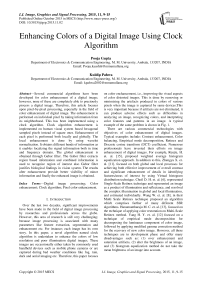Enhancing Colors of a Digital Image Using Clock Algorithm
Автор: Pooja Gupta, Kuldip Pahwa
Журнал: International Journal of Image, Graphics and Signal Processing(IJIGSP) @ijigsp
Статья в выпуске: 11 vol.7, 2015 года.
Бесплатный доступ
Several commercial algorithms have been developed for color enhancement of a digital image; however, none of these are completely able to preciously process a digital image. Therefore, this article focuses upon pixel-by-pixel processing, especially in the field of color enhancement of digital image. The enhancement is performed on individual pixel by taking information from its neighborhood. This has been implemented using a clock algorithm. Clock algorithm enhancement is implemented on human visual system based hexagonal sampled pixels instead of square ones. Enhancement of each pixel is performed both locally and globally. The local enhancement is done by using wavelet normalization. It obtains different bands of information as it enables localizing the signal information both in time and frequency domain. The global enhancement is obtained through Gabor filter. The Gabor filter extracts region based information and combined information is used to recognize region of interest also Gabor filter justifies biological findings in vision system. The results after enhancement provide better visibility of minor information and finally the enhanced image is obtained.
Digital image processing, Color enhancement, Clock algorithm, Pixel color enhancement
Короткий адрес: https://sciup.org/15013922
IDR: 15013922
Текст научной статьи Enhancing Colors of a Digital Image Using Clock Algorithm
Published Online October 2015 in MECS
Over the last two decades, significant improvements have been made in the field of digital image processing by researches and professionals across the globe. However, this area of research is still very challenging; because image processing is associated with many parameters like feature extraction, segmentation and enhancement etc. For instance; each image has its own story. In this paper, a novel algorithm named clock algorithm is undertaken to enhance the colors of low resolution and poor illumination digital images. These images are occassionally either taken by commonly used handheld devices such as mobile phone cameras or are captured during bad weather conditions like fog, rain, dark and aerial imaging etc. Therefore, this paper focuses on color enchancement, i.e., improving the visual aspects of color distorted images. This is done by removing or minimizing the artefacts produced in colors of various pixels when the image is captured by same devices.This is very important because if artifacts are not eliminated, it can produce adverse effects such as difficulties in analyzing an image, recognizing colors, and interpreting color features and patterns in an image. A typical example of the same problem is shown in Fig. 1.
There are various commercial technologies with objectives of color enhancement of digital images. Typical examples include: Contrast enhancement, Color balancing, Empirical mode decomposition, Retinex and Discrete cosine transform (DCT) coefficient. Numerous professionals have invested their efforts on image enhancement of digital images. For example, Renjie, H. et. al. [15], proposed weighted average histogram equalization approach. In addition to this, Zhengya X. et. al. [11], focused on both global and local processes for achieving both effective improvement of overall contrast and significant enhancement of details in identifying features/areas of interest by using Virtual histogram distribution technique. Choil D. H. et. al. [6], represented Single-Scale Retinex technique and represented an image as a product of illumination and reflectance, and resolved the complex illumination in global and local illumination, and estimated individually. Wang W. et. al. [8], in their Multi Scale Retinex technique proposed an algorithm which comprises further of many different SSR algorithms. Hanumantharaju M. C. et. al. [13], focused on the technique of applying color restoration on Multi-Scale Retinex method. Yang H. Y. et. al. [12] focused on a technique of empirical mode decomposition for decomposing the luminance component of color image, followed by applying modified gamma correction method for the recovery of new color image. However, all these techniques are in development phase and offer many disadvantages such as: (1) over enhancement and saturation artifacts, (2) alter the brightness of an image, and (3) histogram equalization method do not take the mean brightness of an image into account.
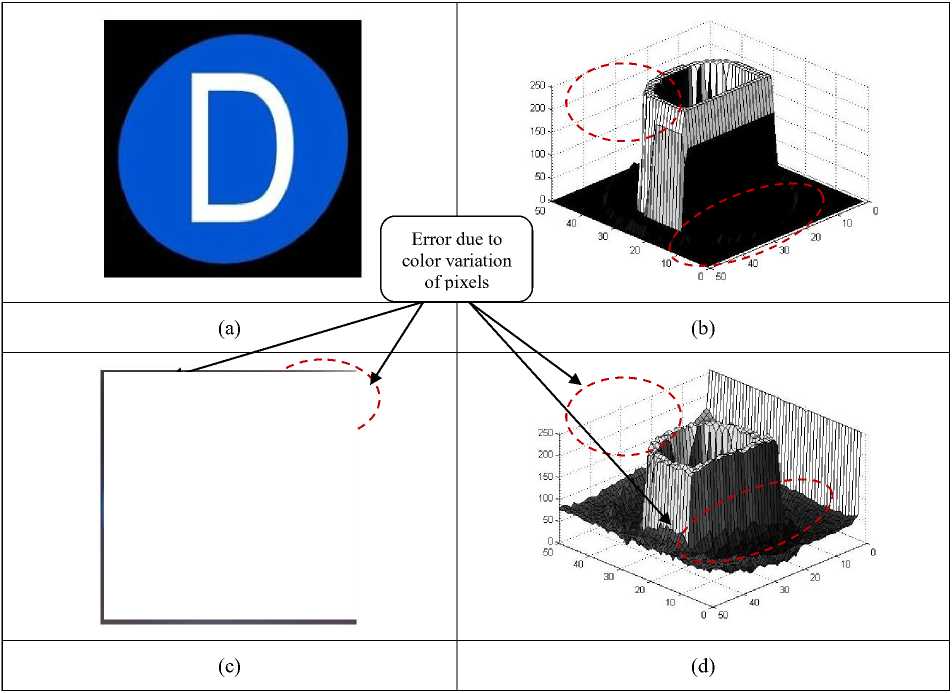
Fig. 1. (a) Original image of D, (b) Its 3D representation taken at azimuth angle (-135) and elevation angle (39), (c) Original D image captured by camera, and (d) Its corresponding 3D representation at azimuth angle (-135) and elevation angle (39).
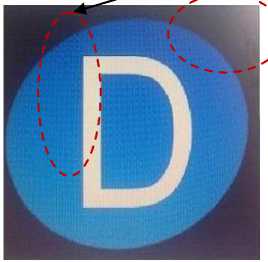
Moreover, all these techniques cannot be successfully applicable to any specific region/area of interest of an image. Some of these (e.g. Virtual histogram distribution) can only be applied to specific color models such as YC B C R color model for Virtual histogram distribution. However, Retinex is the latest technology at its infancy stage in the areas of aerial and medical imaging. Therefore, existing technologies are not efficient enough to fulfill the requirement of color enhancement in terms of their parameters: hue, saturation, brightness and contrast. However the purpose of this article is not being critical; but being in this particular domain on limelight. Hence, a new algorithm named clock algorithm is introduced in this paper.
-
II. P ixel -B y -P ixel C olor E nhancement U sing C lock A lgorithm
The principle of the proposed clock algorithm is shown in fig. 2. It is based on the principle of operation of an analog clock. Clock pinion/center is used to point at the center of the area which needs processing. The minute hand is usually longer in length, so it is used to cover the surrounding area. The minute hand will gain information about the area under processing and the surrounding area;
while the small hour hand will use this information to do color enhancement of the processed area of image. The central pixel is called the target pixel and all the nearby pixels are called neighborhood pixels. The information related to changing color of target pixel is obtained from its neighborhood pixels. Thus a window is formed in that region and the dimensions of window can be changed depending upon the information required to change the color of the targeted pixel. This way the pixel-by-pixel image processing can be achieved by generating information from surrounding area. Thus, the colors of the affected area/pixels can be enhanced by applying proposed technique on each pixel and its neighborhood pixels to achieve more vivid and natural colors. A more clear view of the problem of color degradation of the low resolution image can be observed from figure 2. In figure 2, the small window shows the zoomed (pixel level) and their RGB values. It can be observed from fig. 2 that, there is huge variation in RGB (Red-Green-Blue) color values, that leads to poor color resolution of images. Therefore the idea of clock algorithm is to gain this information from the surrounding pixels and then divide the pixels into further pixels and vary their colors according to the obtained information. The algorithm of the proposed approach is mentioned in fig. 2.
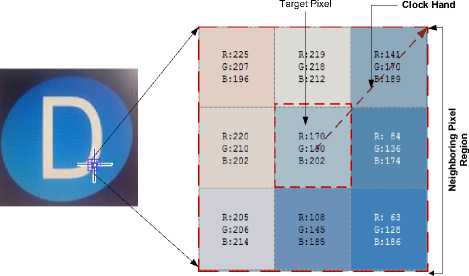
Fig. 2. Window showing pixel values in the RGB color space and clock algorithm.
-
III. S ystem M odeling and M athematical A nalysis
Fig. 3 Briefs the complete block diagram of clock algorithm for digital color enhancement. The proposed algorithm consists of four steps processing:
Step-I: The first part is to retrieve the information from the acquired image. This information contains the type of image like gray scale or color image, size of image, format of image etc.
Step-II: After collecting information from the image the second part of block diagram is to design a clock structure on an image for color enhancement. The clock algorithm is carrying two parts. The first part is to convert the square pixel image into hexagonal pixel image using wavelet normalized Gabor filter for both local and global enhancement of individual pixel. spiral addressing technique [5]. This method will produce each pixel in the
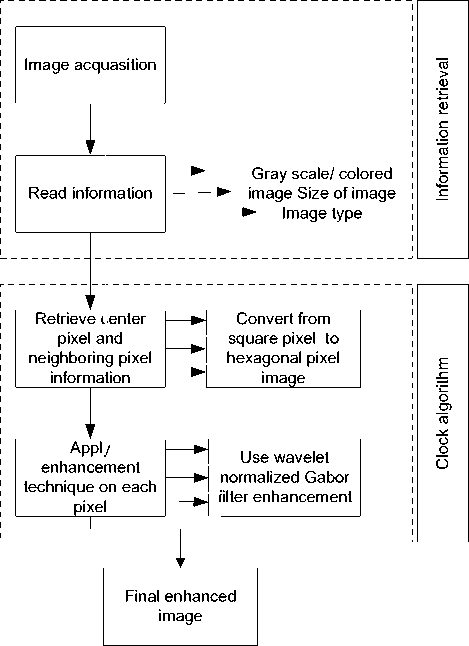
Fig. 3. A typical block diagram of pixel based clock algorithm for digital color enhancement system.
shape of hexagonal pixel; can be seen from figure 4. This conversion is done because of the various advantages of hexagonal pixels over square pixels [2, 4, 9]. The second part is color enhancement using
Neighboring Pixels
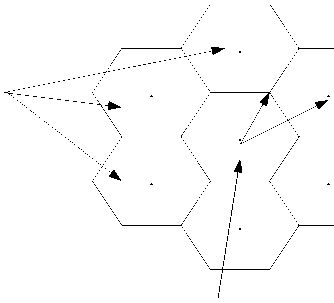
Center Pixel
Fig. 4. Hexagonal pixel structure showing center pixel and neighboring pixels.


Hour Hand

Minute Hand
From fig. 4; it can be observed that the pixels with red center are called center pixels and are represented by hour hand. All the pixels with black centers that surround the center pixel are called neighboring pixels and are represented by minute hand. The center pixel gain information from the neighboring pixels. So, a number of clocks are designed using this technique and the purpose of each clock is to enhance the center pixel after obtaining information from its surroundings. Hour hand; which needs processing acquires both types of information (local and global) from its surrounding.
Step-III: The local enhancement of individual pixel is obtained by applying wavelet normalization on each pixel.
Normalization is a tool to adjust the dynamic range of gray scale image between the interval [0, 255] or [0, 1] and wavelet transform has the advantage of localizing in both time and frequency domains, the combined effect of time and frequency resolution obtained from wavelet transform outputs in extraction of detailed information from an image. The two dimensional wavelet transform for an image I(x, y) is defined as:
wsf (и,v)=∫ ∫ D (X,У) "^ ( , )(1)
And if dilation is defined by a factor s then
^s (X,У)="^ ( ; , ’- )(2)
Also
̃( , )= ̃(- ,- )(3)
Thus equation (1) can be rewritten as convolution of two:
Wsf (и,v)=I ∗ ̃(и,V)(4)
So, wavelet transform is the filtering of image I(x, y) using the filter ̃( X , У ), that is a variable width band pass filter [1]. Wavelet decomposition divides an image into two frequency components i.e. low frequency components and high frequency components. For obtaining complete local information from each pixel; the low frequency components (approximation coefficients) are further enhanced using histogram equalization and the high frequency component (accentuate coefficients) are multiplied by a scaling factor to enhance the edge information. Then finally inverse discrete wavelet transform results in a normalized image with enhancement in its edges and contrast. The fig. 5 gives the description of step 3.
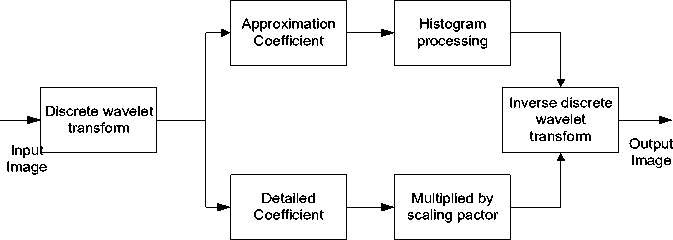
Fig. 5. Block diagram of image normalization using wavelet based illumination.
Step-IV: The final step for Global enhancement is achieved using Gabor filter. Main causes for using a Gabor filter is because the frequency and orientation representations of Gabor filters are similar to those of the human visual system. In image processing, the Gabor filters are used to capture local information from an image and these local information are further combined to create Global features of that image. A 2-dimensional Gabor filter g(x, y) consists of a sinusoidal plane wave of some frequency and orientation (carrier), modulated by a 2-dimensional Gaussian envelope [3]. It can be written as:
g ( X , у )= i ( x , У ). w( X , У ) (5)
i(x, y) is a complex sinusoid known as carrier; and is given as:
i ( x , У )= e
-J2k ( uox+voy+(p )
And can be expanded as:
I ( X , У ) =cos(2 u ( UqX + voy )+ Ф )+
J sin(2и(UqX + vQy)+Ф )(7)
w (x, y) is a 2-D Gaussian shape function known as envelope. The complex sinusoid is defined as follows
s(X,У)=е-Пк ( и0х+и0У )(8)
The 2-D Gaussian function is defined as follows:
()
g(x,у)=√гка 6 ( )(9)
ax , ay represent scaling parameters of the two axis of the Gaussian envelope, x' = + ysmd(10)
y' = + ycosd(11)
And 6 is rotation angle of the Gaussian envelope (x, y))
The centre frequency, radial frequency and orientation of Gabor function are given by:
Centre frequency= (u0, v0);
Radial frequency= f0=√ Uq + vo ;
Orientation= 9 =tan 1 v°⁄ IZq
The 2D Gabor filter then can be written a
ℎ( X , •у )= е
( X2 у2
( )
.
-j2n ( uox+voy+(p )
Each filter bank is fully implemented by selecting the four parameters i.e. orientation ( 9 ) , frequency (f) and scaling factors ( Qx , ау ) . A filter bank is obtained by varying these parameters, and this filter bank covers the complete frequency domain. In this paper the best results are obtained at 9 = /8,
/ = 0.5⁄ я , Ох = 0.5⁄ Я and Оу =1⁄ я .
By following this way the complete enhanced image (Local and Global Enhancement) is obtained using proposed clock algorithm. The final results of enhanced images can be seen in the following fig. 6.
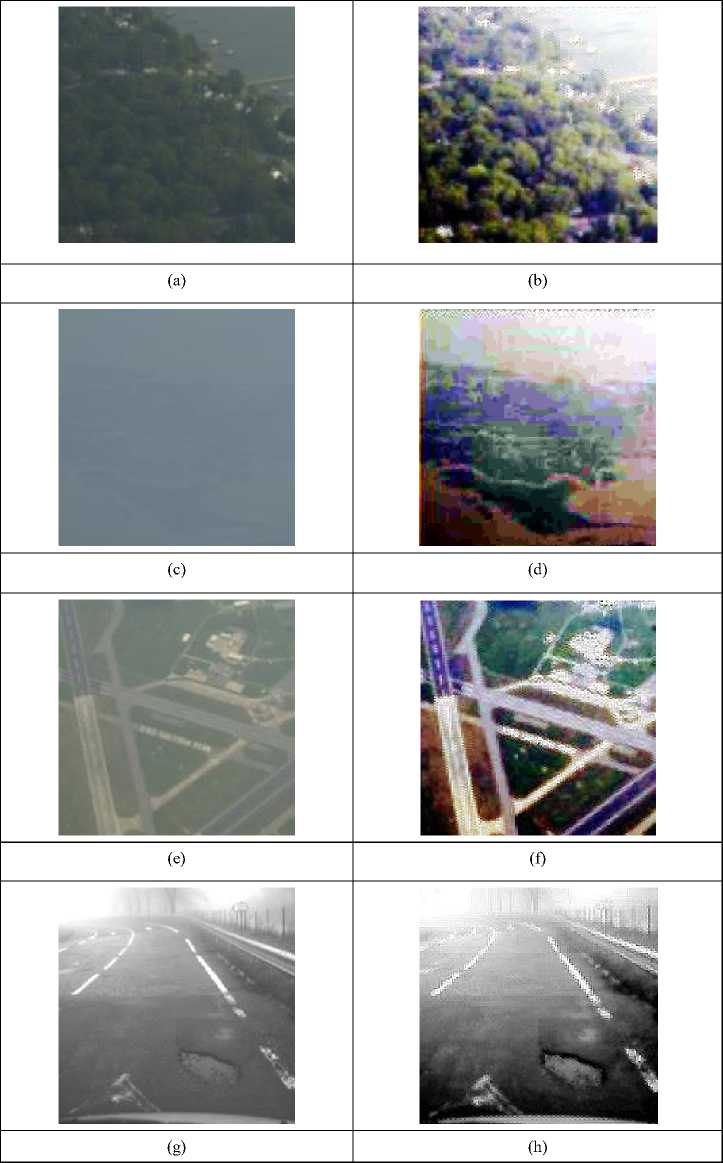
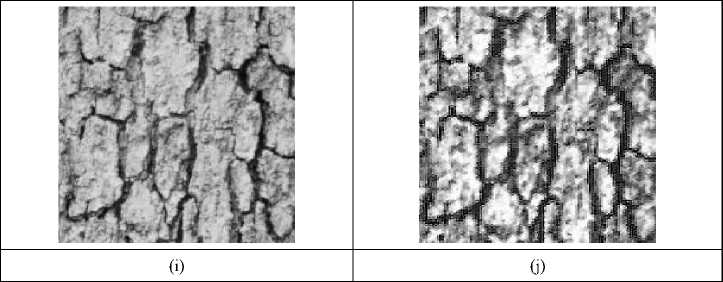
Fig. 6. Original image (left) and enhanced image (right) obtained by applying proposed clock algorithm.
Fig. 6 shows obtained results after applying clock algorithm. These pictures have been taken under foggy weather using aerial imagery. Sometimes it is difficult to analyze the objects due to poor weather conditions either directly or through cameras also. This algorithm provides good visibility to those images which show poor visibility due to any reason like poor lighting conditions, bad weather etc. From the results it is clearly visible that the output obtained after enhancement provide better colors and good visibility of objects in an image.
-
IV. C onclusion
In this piece of research, a new clock algorithm for color enhancement is proposed for digital images. The traditional algorithms described in literature; enhance images by improving contrast, identifying features and area of interest, but noise still persists and quality is not upto the mark under different weather condition and varying lighting conditions. In contrast to these techniques, the clock algorithm extracts the local and global information from an image; thus improving the overall strength in an image. The complete enhancement is done on human visual system based hexagonal pixel structure as compared to the other techniques where enhancement is provided on square structure. The main application of this research is in the area of image analysis and color enhancement to highlight the objects and minor information accurately. This does not mean that the proposed approach removes the entire noise and provides complete visibility in the bad weather, but to a greater extent compared with other existing techniques. This research will not only be helpful in aerial imaging but focuses on improving results in medical imaging, foreignsic science imaging and for space research.
Список литературы Enhancing Colors of a Digital Image Using Clock Algorithm
- S. G. Mallat, "A theory for multiresolution signal decomposition: the wavelet representation", IEEE Transactions on Pattern Analysis and Machine Intelligence, pp. 674–693, 1989.
- G. Tirunelveli, R. Gordon and S. Pistorius, "Comparison of Square-Pixel and Hexagonal-Pixel Resolution in Image Processing", IEEE Canadian Conference on Electrical and Computer Engineering, vol. 2, pp. 867-872, 2002.
- T. Andrysiak, M. Choras, "Image retrieval based on hierarchical Gabor filters", International Journal of Applied Mathematics and Computer Science, vol. 15 (4), pp. 471-480, 2005.
- X. He, and W. Jia, "Hexagonal Structure for Intelligent Vision", Proceeding of International Conference of Information and Communication Technologies (IEEE), Karachi, pp 52-64, September, 2005.
- X. He, T. Hintz, Q. Wu, H. Wang and W. Jia, "A New Simulation of Spiral Architecture", In Proc. IPCV, pp 570-575, 2006.
- D. H. Choil, "Color Image Enhancement Using Single-Scale Retinex based on an Improved Image Formation Model", 16th European Signal Processing Conference (EUSIPCO), 2008.
- J. Mukherjee and S. K. Mitra, "Enhancement of Color Images by Scaling the DCT Coefficients", IEEE Transactions on Image Processing, vol. 17, no. 10, pp. 1783-1794, 2008.
- W. Wang, B. Li, J. Zheng, S. Xian and J. Wang, "A Fast Multi-Scale Retinex Algorithm for Color Image Enhancement", Proc. of International Conference on Wavelet Analysis and Pattern Recognition, pp. 80-85, 2008.
- S. Coleman, B. Scotney, and B. Gardiner, "Design of Feature Extraction Operators for use in Biologically Motivated Hexagonal Image Structures", Conference on Machine Vision Applications, Yokohama, Japan, pp 178-181, May 2009.
- Z. Jiao and B. Xu, "An Image Enhancement Approach Using Retinex and YIQ", International Conference on Information Technology and Computer Science, pp. 476-479, 2009.
- Z. Xu, H. R. Wu, X. Yu and B. Qiu, "Colour Image Enhancement by Virtual Histogram Approach", IEEE Transactions on Consumer Electronics, vol. 56(2), 2010.
- H. Yang, S. Liand P. Yin," Efficient Color Image Enhancement Based on Fast and Adaptive Bidimensional Empirical Mode Decomposition", International Symposium on Computer Science and Society, pp. 319-322, 2011.
- M. Hanumantharaju, M. Ravishankar, D. R. Rameshbabu and S. Ramachandran, "Color Image Enhancement using Multiscale Retinex with Modified Color Restoration Technique", Second International Conference on Emerging Applications of Information Technology, pp. 93-97, 2011.
- M. Sundarama, K. Ramarb, N. Arumugama and G. Prabina, "Histogram Modified Local Contrast Enhancement for Mammogram Images", Applied Soft Computing, vol. 11, pp.5809–5816, 2011.
- R. He, S. Luo, Z. Jing and Y. Fan, "Adjustable Weighting Image Contrast Enhancement Algorithm and its Implementation", 6th IEEE Conference on Industrial Electronics and Applications, pp. 1750 –1754, 2011.
- S. Veni, and K. A. Narayanankutty, "Gabor Functions for Interpolation on Hegagonal Lattice", International Journal of Electronics and Communication Technology, vol. 2, Issue 1, pp.15-19, March 2011.
- I. A. Humied, F. E. Z. Abou-Chadi and M. Z. Rashad, "A New Combined Technique for Automatic Contrast Enhancement of Digital Images", Egyptian Informatics Journal, vol.13, pp. 27–37, 2012.
- S. Parthasarathy and P. Sankaran, "An Automated Multi Scale Retinex with Color Restoration for Image Enhancement", National Conference on Communications, 2012.
- B. Kumar, P. Gupta, and K. Pahwa, "Square Pixel to Hexagonal Pixel Representation Techniques", International Journal of Signal Processing, Image Processing and Pattern Recognition, vol. 7, Issue 4, pp. 137-144, 2014.
- P. Gupta, and K. Pahwa, "Visual Quality Improvement of Medical Images using Pixel Reconstruction Followed by Gabor Enhancement Technique", International Journal of Signal Processing, Image Processing and Pattern Recognition, vol. 7, Issue 4, pp. 137-144, 2014.

